BY BRAD SCHLUETER
Keith Moon was the irrepressible force that helped The Who become one of the most important bands of the ’60s, alongside The Beatles and The Rolling Stones. Keith Moon drumming style and his self-destructive antics are legendary, from his alcohol abuse, to passing out midway through a concert after taking horse tranquilizers, to the widely believed myth of him crashing a Rolls Royce into a swimming pool.
He trashed homes, cars, hotel rooms, dropped explosives down toilets, and annihilated countless drum sets before he finally destroyed himself at the age of 32 by overdosing on medication ironically intended to help wean him off alcohol. Keith Moon drumming style was tribal, primitive, and impulsive, with him often stomping the bass drums and pounding his wall of toms like a madman.
Yet his drumming was often surprising and always made an impression. Moon’s contribution to The Who’s music and his influence on other drummers cannot be overstated. He was one of a kind. Here are some of his most memorable moments.
How to Play Like Keith Moon
“I Can’t Explain”
from Meaty Beaty Big And Bouncy
This Townsend-penned song was The Who’s first single, and first exposed the world to Moon’s aggressive style of drumming. Here he plays a groove that explores variations on a common ’60s twist beat, identified by its signature double snare hits.
The track also reveals Moon’s tendency to stomp his bass drums during his fills to add more impact to them, which became a trademark of his drumming style.
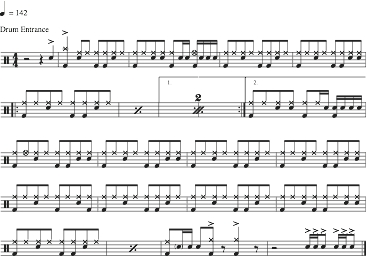
“I Can’t Explain”
“Who Are You”
from Who Are You
For the intro of this popular song, Moon plays an accented two-handed sixteenth-note hi-hat part. His play on the verse is notable, because while most drummers would use a more consistent pattern, Moon changes his from measure to measure. Surprise and spontaneity were strong characteristics of his drumming.
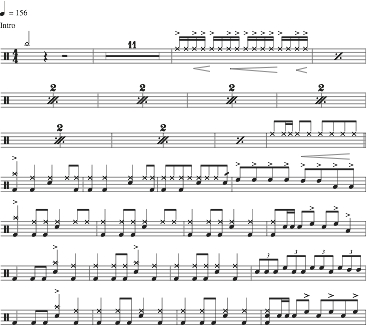
“Who Are You”
“My Generation”
from The Who Sings My Generation
The lyrical irony of this song is that it has succinctly captured the teenage angst and arrogance of every generation since it was written more than 40 years ago. Moon plays a groove with a hint of swing that, along with John Entwistle’s bass line, gives the song its driving bounce. If your band ever covers this song, remember that triplet fills will work every time.
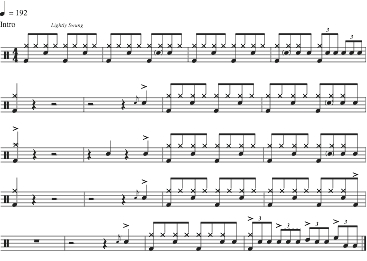
“My Generation”
“Won’t Get Fooled Again”
from Who’s Next
This Who anthem features an early use of a synthesized sequencer and some of Moon’s best-known fills. At the drum entrance, he plays a big crash on 1 and then holds back until the & of 1 in the next bar, using the upbeat syncopation to set up his fills.
He repeats the idea and incorporates his toms in his groove in the four bars before the verse. There’s a drum break with fills played over the sequencer later in the song, where Moon plays fills phrased in threes over the top of his eighth-note bass drum pattern, which creates an interesting polyrhythmic feel that perfectly sets up singer Roger Daltry’s famous rock scream.
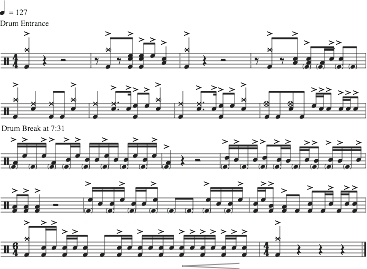
“Won’t Get Fooled Again”
“Bargain”
from Who’s Next
“Bargain” opens with a classic rock and roll drum fill in which Moon plays snare ghost notes between the accents; these are felt more than heard, yet they contribute lots of energy to the feel. For the timekeeping duties, Moon again makes frequent use of his bass drum, playing eighth-notes of varying volumes while hammering snare notes and brief tom fills on top of them.
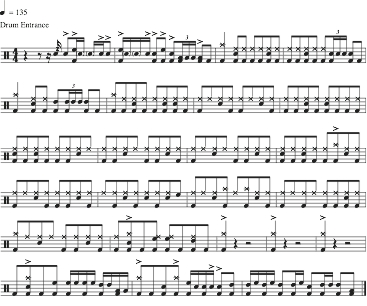
“Bargain”
“Baby Don’t You Do It”
from Odds & Sods
This song begins with just drums and vocals, and features Moon’s take on a Bo Diddley groove that usually accents counts 1, the & of 2, 4, and counts 2 and 3 of the following measure (an accent pattern also known as a 3:2 son clave). Moon improvises around this rhythmic foundation while complementing every nuance of Daltry’s vocal part.
Variations on this groove have been popular since the ’50s and countless songs have made great use of it, from Buddy Holly’s “Not Fade Away” and Bow Wow Wow’s cover of The Strangelove’s “I Want Candy,” through to U2’s “Desire.”
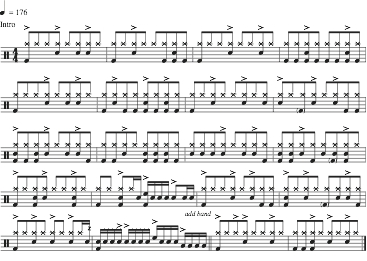
“Baby Don’t You Do It”
“Love Rein O’er Me”
from Quadrophenia
This emotional 12/8 song begins quietly, and Moon enters with rolling cymbal crescendos before exploding into powerful fills that have a hint of swing (implied in so much of the music from the late ’60s). Though Moon stomps eighth-notes on his bass drum for most of this song and adds fills over it, he plays his bass drum less repetitively for the intro section transcribed here.
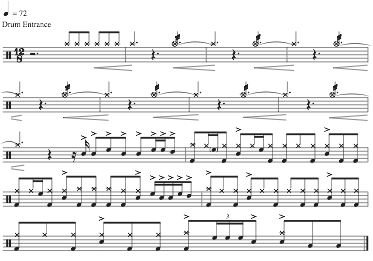
“Love Rein O’er Me”
